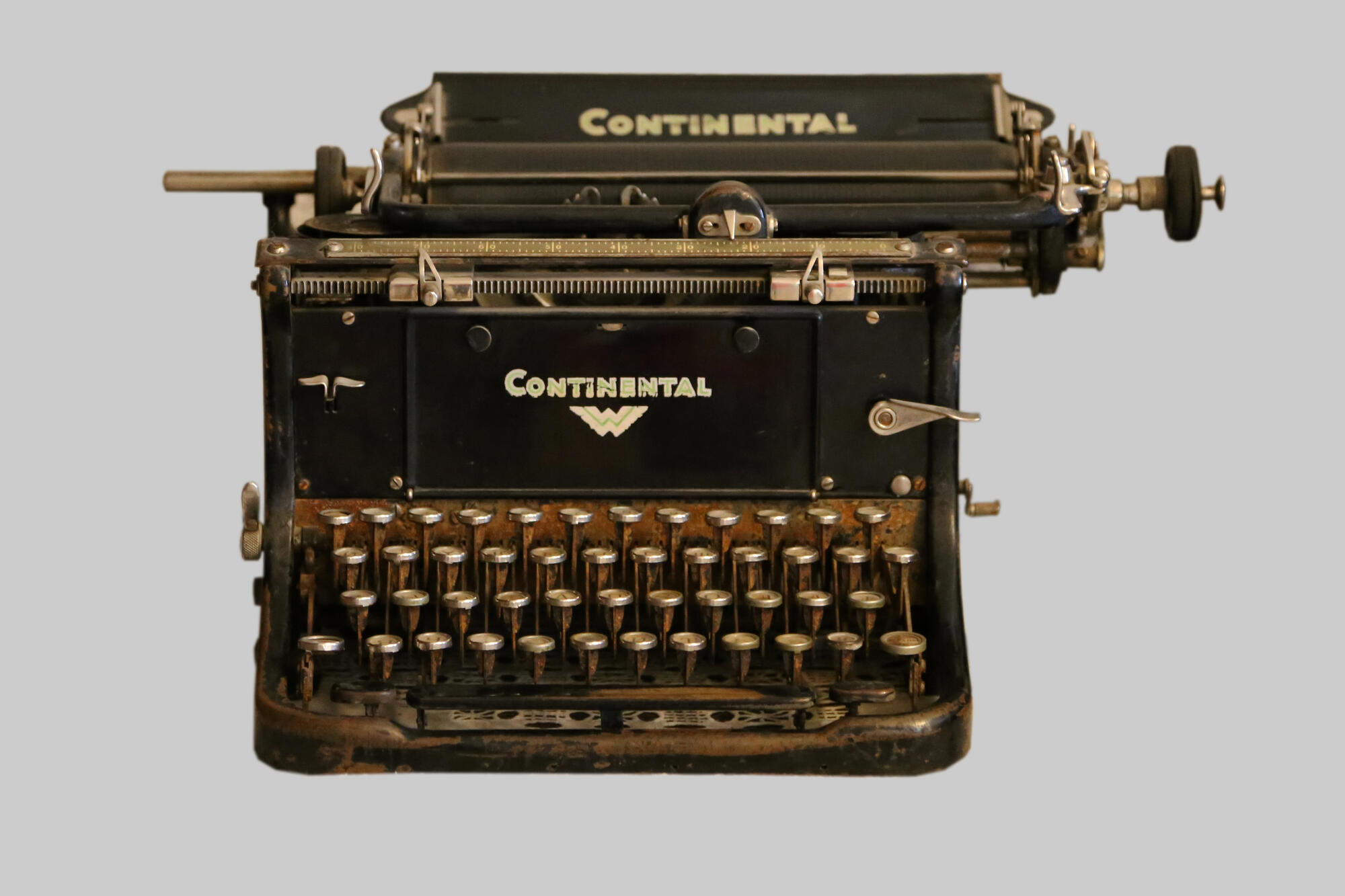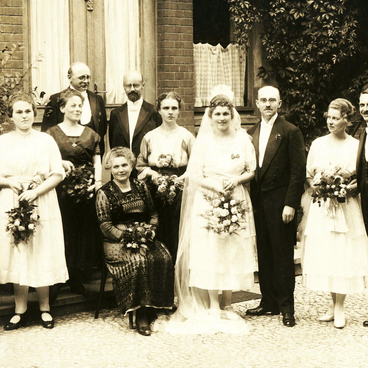Typewriters appeared in Sarepta, a former German colony, in the early 1890s. They were not produced in Russia before the revolution, and imported ones were expensive, so there were few typewriters in the colony.
Paul Glitch was the first in the town to start a typewriter at his factory to increase the prestige of the enterprise. At that time, typewriters were still a luxury. Paul Glitch, the last member of the Glitch dynasty, was the only millionaire in Sarepta. Due to the high quality of mustard products produced by the family production, the Glich family was the richest and most prosperous in the town by the end of the 19th century.
There were two typewriters at the Sarepta railway station. The first one was at the station itself. It printed reports to the administration of the Vladikavkaz road, documents on the operation of the station and the Sarepta distance of the track. The second machine was in the gendarmerie (police) at the station.
Continental typewriters were manufactured at the German company Wanderer Werke AG, founded in 1885 in the Saxon city of Chemnitz. The company began production of typewriters in 1903, and a year later they appeared on the market under the name Continental Standard, in the same year the Germans patented their invention.
The history of typewriters begins at the beginning of the 18th century. In 1714, a patent was issued in England for a certain writing machine. It was invented by plumber Henry Mill, but there are no exact data on the mechanism and images of the machine itself.
A century later, in 1808, the first and, importantly, a working typewriter appeared. Italian PellegrIno Turri invented it for his friend Countess Carolina Fantoni da Fivisono. Carolina was blind, and with the help of such an apparatus, she could correspond with her relatives. Carolina’s letters have survived to this day, but the writing apparatus has not. It is known to use soot-stained paper for printing.
The next attempt to create a machine suitable for “quick printing” was made in Russia, when Mikhail Alisov developed a typing machine. The machine showed itself perfectly, however, the high cost prevented the development of this product.
September 1867 became a landmark date for all typing machines in the world. Christopher Scholes was an American writer, journalist, and inventor. In 1867 he applied for a patent for the production of his printing apparatus.
A year later, Scholes obtained a patent confirmation. Samuel Soul and Karl Glidden were co-authors of the development. Six years later, the first batch of “Sholes & Glidden Type Writer” typing machine entered the American market.
Inventors from different countries have improved typewriters, but the development of science and technology has led to their replacement with other devices. The world’s last typewriter factory, located in India, closed in April 2011.
Paul Glitch was the first in the town to start a typewriter at his factory to increase the prestige of the enterprise. At that time, typewriters were still a luxury. Paul Glitch, the last member of the Glitch dynasty, was the only millionaire in Sarepta. Due to the high quality of mustard products produced by the family production, the Glich family was the richest and most prosperous in the town by the end of the 19th century.
There were two typewriters at the Sarepta railway station. The first one was at the station itself. It printed reports to the administration of the Vladikavkaz road, documents on the operation of the station and the Sarepta distance of the track. The second machine was in the gendarmerie (police) at the station.
Continental typewriters were manufactured at the German company Wanderer Werke AG, founded in 1885 in the Saxon city of Chemnitz. The company began production of typewriters in 1903, and a year later they appeared on the market under the name Continental Standard, in the same year the Germans patented their invention.
The history of typewriters begins at the beginning of the 18th century. In 1714, a patent was issued in England for a certain writing machine. It was invented by plumber Henry Mill, but there are no exact data on the mechanism and images of the machine itself.
A century later, in 1808, the first and, importantly, a working typewriter appeared. Italian PellegrIno Turri invented it for his friend Countess Carolina Fantoni da Fivisono. Carolina was blind, and with the help of such an apparatus, she could correspond with her relatives. Carolina’s letters have survived to this day, but the writing apparatus has not. It is known to use soot-stained paper for printing.
The next attempt to create a machine suitable for “quick printing” was made in Russia, when Mikhail Alisov developed a typing machine. The machine showed itself perfectly, however, the high cost prevented the development of this product.
September 1867 became a landmark date for all typing machines in the world. Christopher Scholes was an American writer, journalist, and inventor. In 1867 he applied for a patent for the production of his printing apparatus.
A year later, Scholes obtained a patent confirmation. Samuel Soul and Karl Glidden were co-authors of the development. Six years later, the first batch of “Sholes & Glidden Type Writer” typing machine entered the American market.
Inventors from different countries have improved typewriters, but the development of science and technology has led to their replacement with other devices. The world’s last typewriter factory, located in India, closed in April 2011.


